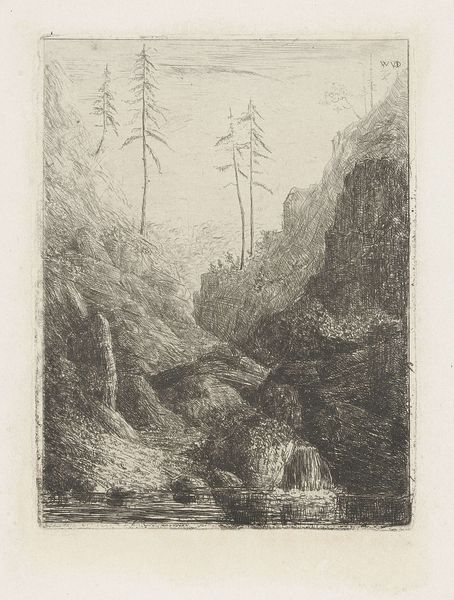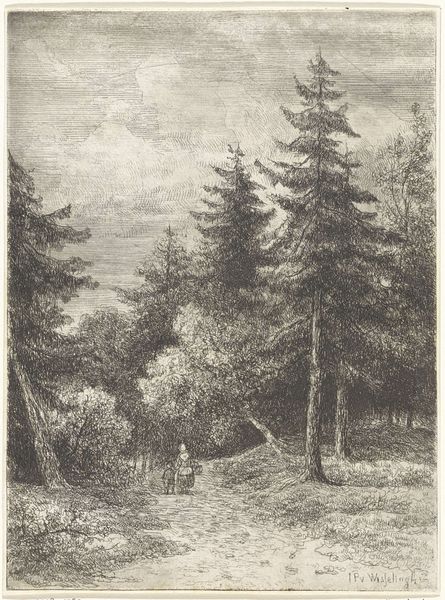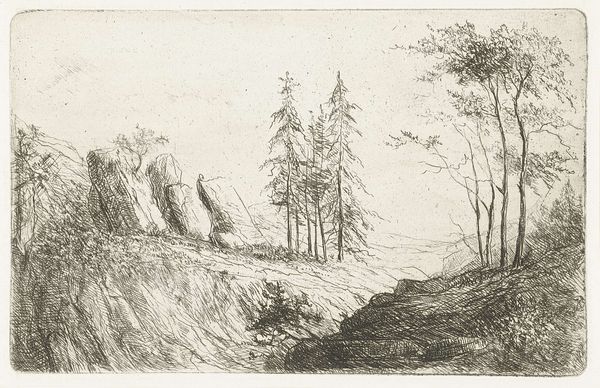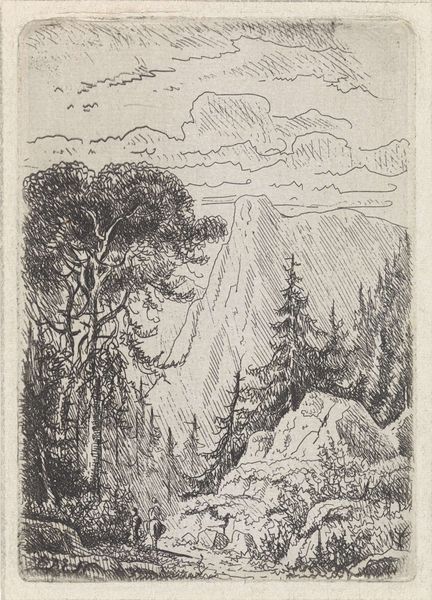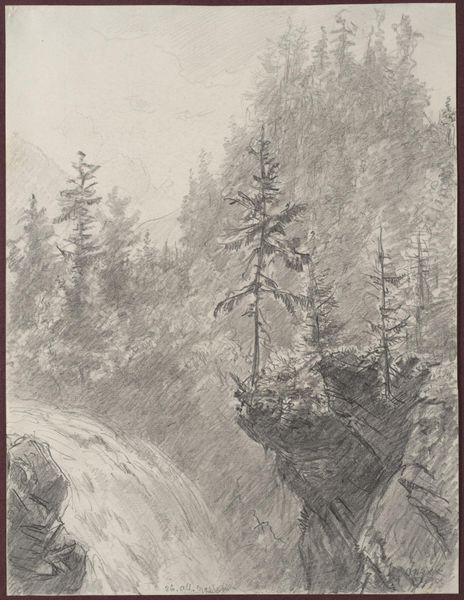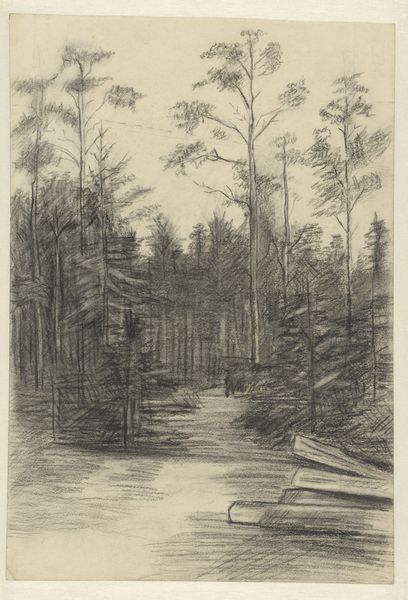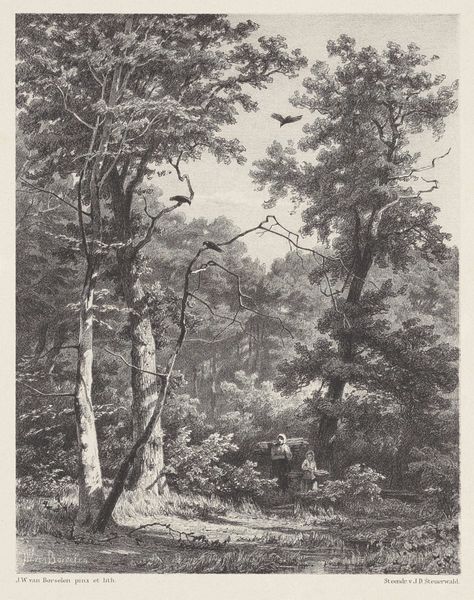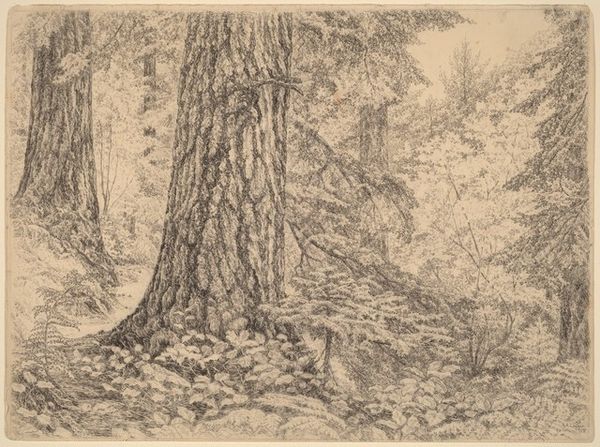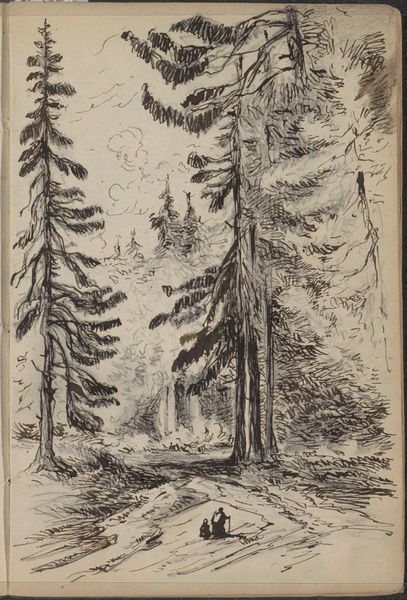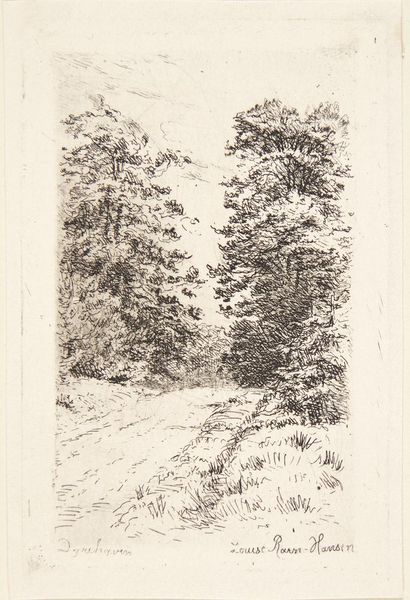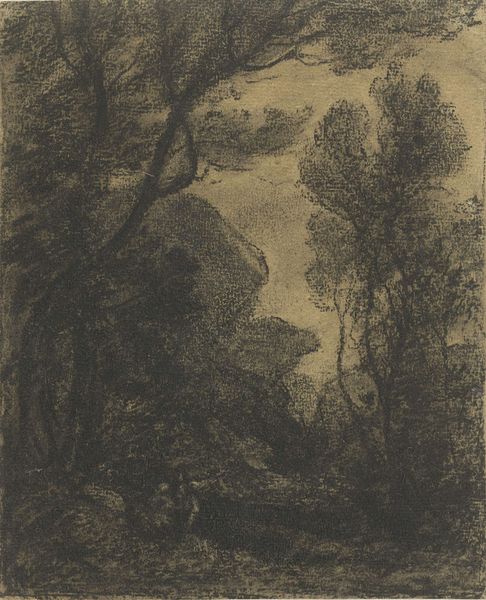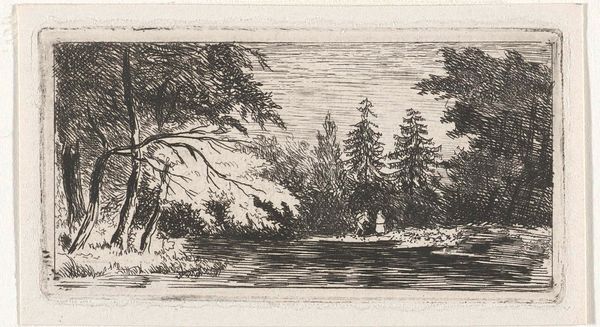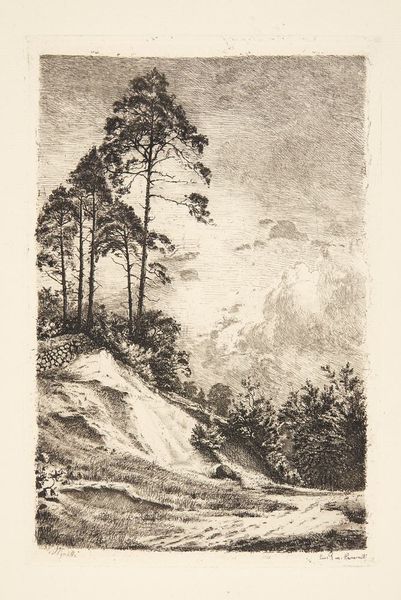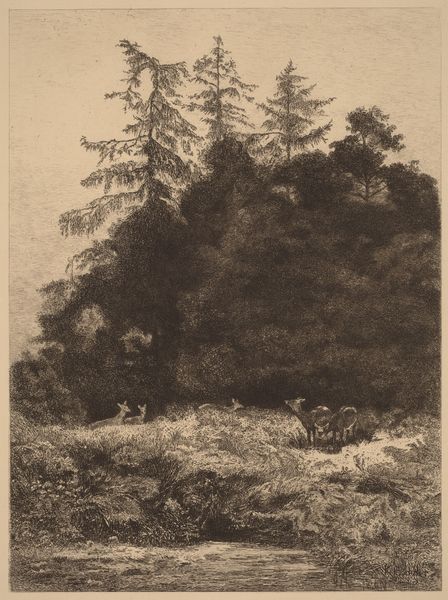
Dimensions: height 126 mm, width 96 mm
Copyright: Rijks Museum: Open Domain
Willem Matthias Jan van Dielen made this etching of a mountain landscape with conifers and a stream in 1864. Etching is an indirect method of engraving, and is also a printmaking technique. The artist likely covered a metal plate with a waxy, acid-resistant substance known as a 'mordant', drawing through this coating with a needle to expose the metal. He then immersed the plate in acid, which bit into the exposed lines. The longer the plate stays in the acid, the deeper the lines become, giving the image a 3D effect. To print the image, the plate is inked, the surface wiped clean, and then pressed onto paper, transferring the ink from the etched lines. Consider the labor involved in this detailed scene: from preparing the plate, to the controlled application of acid. This meticulous process mirrors the artist's own observation of nature. This wasn't merely about replicating a scene; it was a translation of experience through a specific, laborious craft. Seeing the world through close examination and slow work, Van Dielen connects the tradition of landscape art with the detailed labor of craft.
Comments
No comments
Be the first to comment and join the conversation on the ultimate creative platform.
